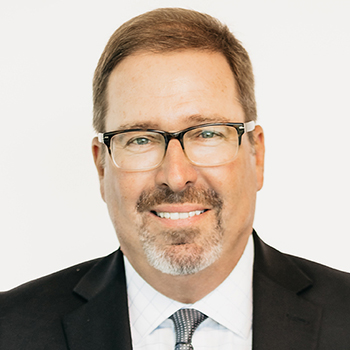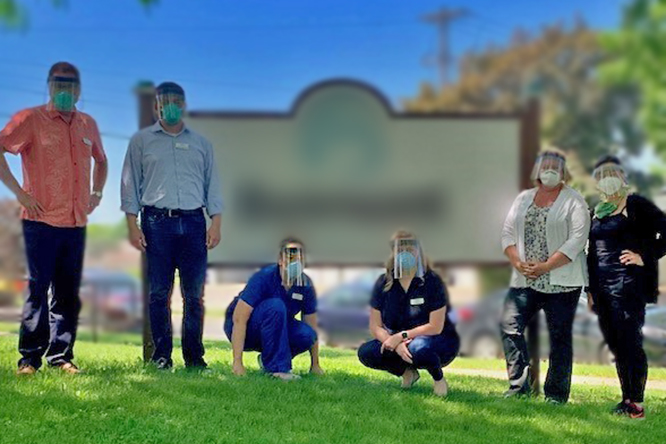
Facing a New Reality
As the number of new COVID-19 cases surges in most areas of the United States, many skilled nursing operators are experiencing outbreaks in much greater numbers than anything they encountered during the early months of the pandemic. A few isolated COVID-19 positive cases in the spring of 2020 may have now mushroomed into scenarios where half or more of the resident and staff population of a skilled nursing facility (SNF) is COVID-19 positive.
Managing this new scenario brings immense challenges that require advance planning and precise execution of a response plan. Health Dimensions Group (HDG) is engaged regularly by organizations that are living through the surge and need resource solutions.
As senior care and living operators as well as consultants, HDG offers COVID-19 consulting support solutions born from our own operating experiences. These solutions typically focus on one or more of the following areas in the pandemic environment:
- Infection control preparedness and outbreak management
- Survey preparedness and audits
- Post-acute, acute, and primary care integrations
- Post-COVID-19 strategic planning and organizational restructuring
Our own organization is not immune from the realities impacting providers nationwide. However, our commitment to thoughtful pre-outbreak planning has served us well in bringing flare-ups under control as quickly as possible. Our COVID-19 prevention and management initiatives are driven by a comprehensive Coronavirus Surveillance Plan. It was this plan that guided one of our managed communities through a significant outbreak just a few months ago.
COVID-19 Support Services in Action: A Case Study
The managed community impacted by this outbreak is an 83-bed SNF located in a Midwest urban setting. Long before the virus made its way into the community, significant groundwork had been put into place in response to what was then the latest guidance from the Centers for Medicare and Medicaid Services (CMS) and the Centers for Disease Control and Prevention (CDC). Our planning process was a collaboration involving many of our service partners, including emergency and non-emergency transportation organizations, physicians, area hospitals, and local home-health and hospice providers, as well as a litany of vendors. We understood the importance of ensuring those we engage with knew our plan as well as we did.
The surveillance plan we developed focused primarily on several key area, including:
- Employee and contractor screening and tracking
- Resident illness tracking and symptom screening
- Restriction of visitors
- Staff education and training
- Personal protective equipment (PPE) supply management
- Policy and procedure updates required by the new guidance
The organization’s COVID-19 Task Force provided centralized support in the development of tracking documents, training materials, and audit tools, as well as other resources that allowed those of us at the community level to focus on patient care. There is no doubt that these resources and the accompanying support contributed in a large way to a zero-deficiency infection control survey that took place just days after the initial outbreak. The survey readiness assistance we received included an overhaul of our existing infection control policies, procedures, and tracking approaches, and support in keeping us current with rapidly changing CMS guidance.
Importance of Communication and Workforce Management during COVID-19 Outbreaks
I cannot recall another time in our profession’s history when timely communication was as important as it is now. You have likely heard stories of families who were desperate to learn of a loved one’s condition in a COVID-19 positive community but received zero regular updates. In this case, the task force was instrumental in the development of a communications plan to reach all audiences. The support included written communication to all residents, families, and staff, as well as signage and flyers to be posted throughout our health care center. The task force also kept our community website and social media sites current with updated notifications for all audiences. The task force also assisted in setting up a call automation process that allowed us to send a prerecorded message to the cell phones of staff and the family members of our residents. In addition, the task force was helpful in guiding us through the development of media statements, when needed.
Without a doubt, managing your workforce during an outbreak is one of the greatest challenges an operator will face. It is not uncommon for the number of COVID-19 positive staff to mirror the number of residents impacted. If the floor drops out from under you and a large percentage of your staff becomes sidelined, it is vital to have a plan in place. Fortunately, in this outbreak example, we had a comprehensive contingency staffing plan that addressed several key areas of the operation, including:
- Defining emergency staffing numbers that must be met to provide essential resident services.
- Initiating response measures when these emergency levels could not be met.
- Assigning crisis management responsibilities among the community’s leadership.
- Evaluating how to safely reduce non-essential services.
- Defining alternative internal leadership duties should a department supervisor become ill.
As a caregiver safety net, we leveraged several 1135 coronavirus waivers and trained and competency tested most department supervisors who could fill in as direct caregivers should emergency staffing levels be compromised. In addition, HDG assembled a COVID-19 Rapid Response Team that could support our clients by deploying executive staff from our central offices to supplement staff. In fact, I was one of those central office staff members deployed. Collaboration between the task force, community leadership, and line staff helped ensure that residents never missed the delivery of care throughout the outbreak.
We also initiated several programs to encourage consistent attendance among the staff and recognize the heroism demonstrated by each team member who did their own job plus that of others when staffing numbers were compromised. These efforts included free meals for all shifts, meals for staff families, and wage incentives. The task force was also instrumental in helping us bolster our interviewing and recruitment activities, as well as keep us current with changing employment regulations.
Resources and support from the task force were also instrumental in helping us monitor and track labor and other expenses related to COVID-19 in order to demonstrate compliance with Payroll Protection Program and stimulus enhancement payments to the community.
In Summary
As a national leader in health care management and consulting services, HDG is uniquely positioned to assist providers that may be struggling to secure the resources to battle outbreaks in their operations. The COVID-19 support services and resources mentioned in this scenario are available to all of our consulting clients. If you are struggling, we can help. For more information on how HDG has helped with COVID-19 outbreaks in other communities, or to discuss options for providing care for your residents, please contact us at info@hdgi1.com or 763.537.5700.










